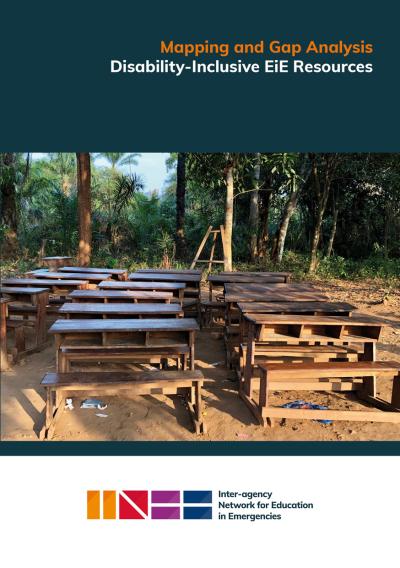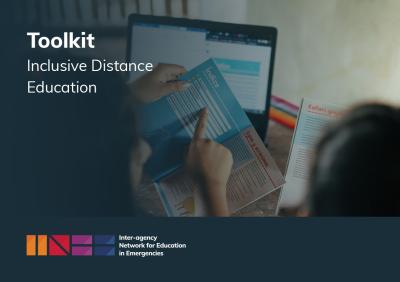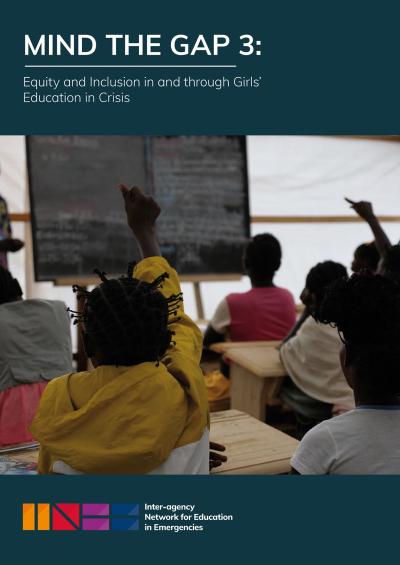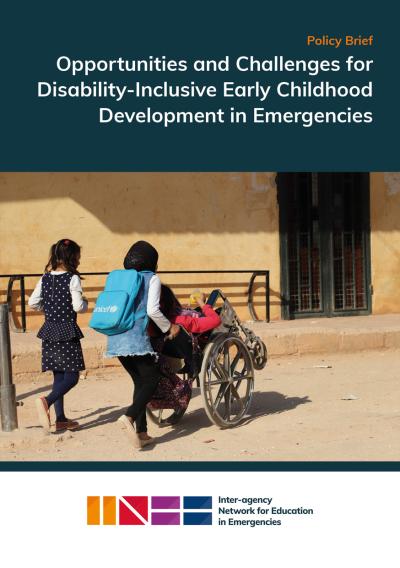Educação Inclusiva
A educação é um direito humano básico que deve ser garantido a todas as crianças e adolescentes, independentemente de sua condição social, gênero, idade, etnia, raça, idioma, religião, deficiência e outras características.
Estimativas recentes sugerem que 224 milhões de jovens afetadas/os por crises precisam de apoio educacional. Considerando que as estimativas indicam que 1 em cada 10 jovens tem uma deficiência, aproximadamente 22,4 milhões de jovens com deficiências podem estar vivendo em situações de emergência e em ambientes afetados por crises.
A educação inclusiva é um processo que garante a presença, a participação e a conquista de todas as pessoas, juntas, nas oportunidades de aprendizagem. Envolve a garantia de que as políticas, as práticas e as instalações educacionais respondam à diversidade de todas as pessoas no contexto. A exclusão da educação pode ser resultado de discriminação, de falta de apoio para remover barreiras ou de uso de idiomas, conteúdo ou métodos de ensino que não beneficiam toddas/os as/os estudantes. As pessoas com deficiências físicas, sensoriais, psicossociais/mentais e de desenvolvimento geralmente estão entre as mais excluídas da educação. A educação inclusiva reconhece que todos os indivíduos podem aprender e que cada um tem características, interesses, habilidades e necessidades de aprendizagem únicas. Portanto, a educação inclusiva significa garantir que as barreiras à participação e ao aprendizado sejam removidas e que os currículos e os materiais de ensino e aprendizagem sejam adaptados, tornados acessíveis e apropriados para que todas e todos os estudantes, em toda a sua diversidade, atinjam seu pleno potencial. Em contextos específicos, ela também pode ser indicada como “Educação inclusiva em situações de emergência”.
Educação inclusiva não é o mesmo que educação especial, educação para necessidades especiais ou integração. Em um sistema educacional inclusivo, diversas/os estudantes podem participar lado a lado na mesma sala de aula. Tradicionalmente, a “educação especial” ou “educação para pessoas com necessidades especiais”, como é chamada em alguns contextos, difere de um sistema educacional inclusivo, pois se baseia na segregação ou integração, e não na inclusão. Quando os programas de educação especial são realizados em salas de aula ou escolas separadas, cria-se uma abordagem integrada ou segregada da educação, em vez de uma abordagem verdadeiramente inclusiva. A aplicação dos princípios do Design Universal na educação pode garantir que todas/os as/os estudantes tenham oportunidades equitativas de acessar, participar e se beneficiar dos processos de ensino e aprendizagem.
Mensagens-chave
- A Educação para Todos, conforme estabelecido no Marco de Ação de Dakar, é um compromisso global de oferecer educação de qualidade para todas as crianças, jovens e adultos. Isso inclui aquelas/es que têm deficiências prévias ou resultantes de desastres naturais ou causados pelos seres humanos. Portanto, deve ser adotada uma abordagem baseada em direitos para a EeE com inclusão de pessoas com deficiência, e a inclusão de pessoas deficientes deve ser integrada à cultura organizacional e institucional.
- A educação em situações de emergência oferece uma oportunidade de criar sistemas educacionais inclusivos desde o início, em situações em que os sistemas educacionais estão em grande parte ou, às vezes, totalmente desestruturados.
- A educação inclusiva é “democracia em ação”. Oferece uma oportunidade para reconstruir sociedades e aproximar as pessoas de todas as divisões, uma vez que enfrentam um desafio comum em proporcionar a todas/os as/os estudantes e aprendentes acesso equitativo à educação relevante e em ambiente seguro, bem como em construir uma cultura de aceitação da diferença e da diversidade.
- A educação em situações de emergência e em contextos afetados por crises, sem dúvida, requer um foco maior na garantia de acesso para pessoas com deficiência, uma vez que os desastres naturais e provocados pelos seres humanos causam danos físicos e psicológicos às pessoas. É provável que as pessoas com deficiência também enfrentem riscos e barreiras maiores em termos de acesso à ajuda (inclusive alimentos, água e abrigo), justamente porque não conseguem acessar fisicamente os pontos de distribuição, as instalações sanitárias e as escolas, ou porque enfrentam barreiras para obter informações sobre a distribuição que está ocorrendo e os serviços disponíveis.
- Intervenções precoces e o fornecimento de materiais de ensino e aprendizagem acessíveis e inclusivos, além de acomodações razoáveis no currículo, na instrução e na avaliação, garantem o acesso, a participação e o aproveitamento do aprendizado de todas/os as/os estudantes, inclusive de estudantes com deficiência.
- O envolvimento significativo das comunidades nos esforços de educação, especialmente das Organizações de Pessoas com Deficiência (OPDs), aumenta a propriedade local dos esforços de educação inclusiva.
- São necessários mais esforços para fortalecer as ferramentas e os processos de coleta e processamento de dados sobre deficiências que levarão a uma tomada de decisão mais informada em todas as fases de uma emergência.
- A formação e o apoio ao bem-estar e à motivação de professoras/es, incluindo aquelas/es com deficiência, ajudam a atender às diversas necessidades das/os estudantes.
Esta coleção foi desenvolvida com o apoio de Myriam Jaafar, Coordenadora de Educação Inclusiva da INEE.









